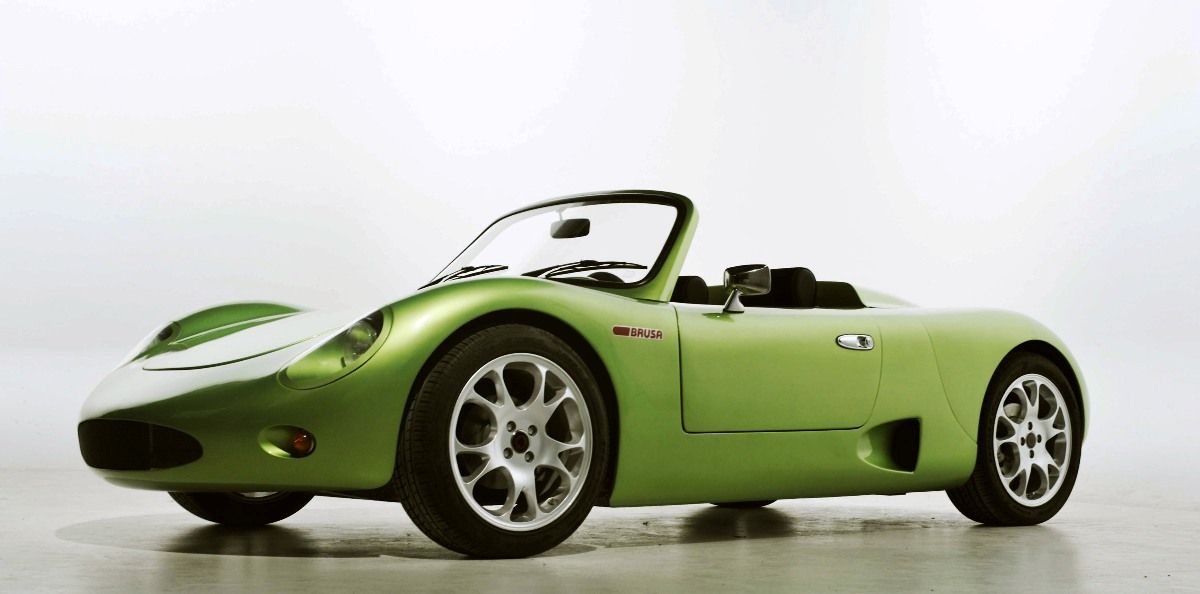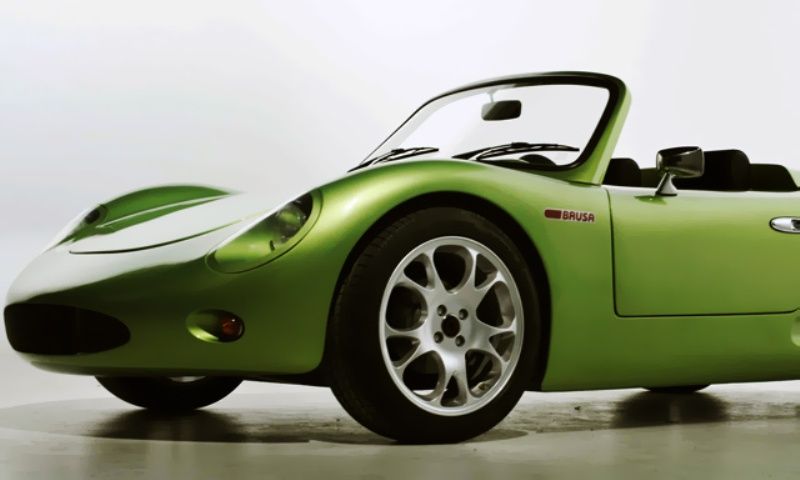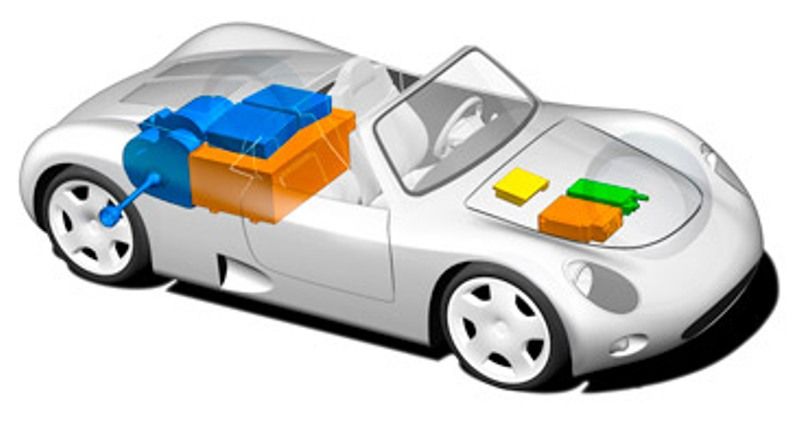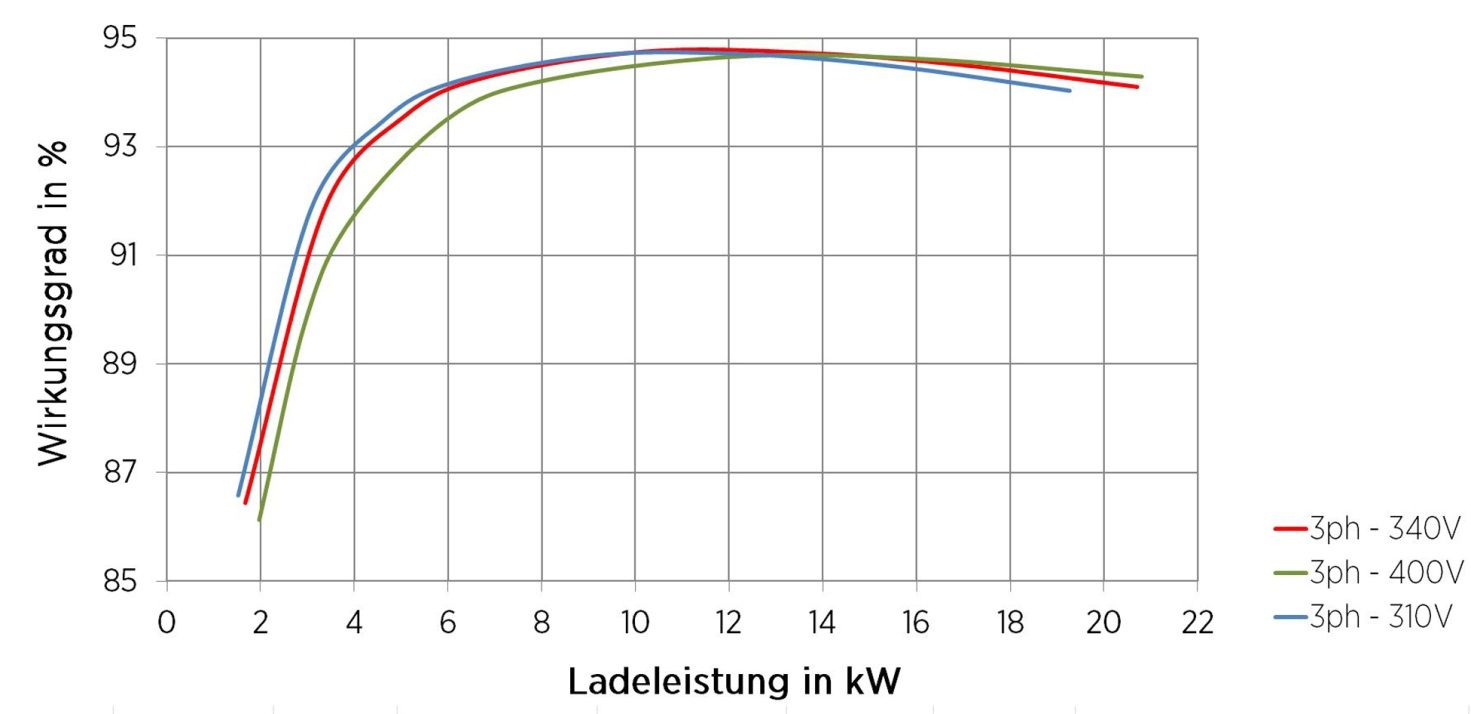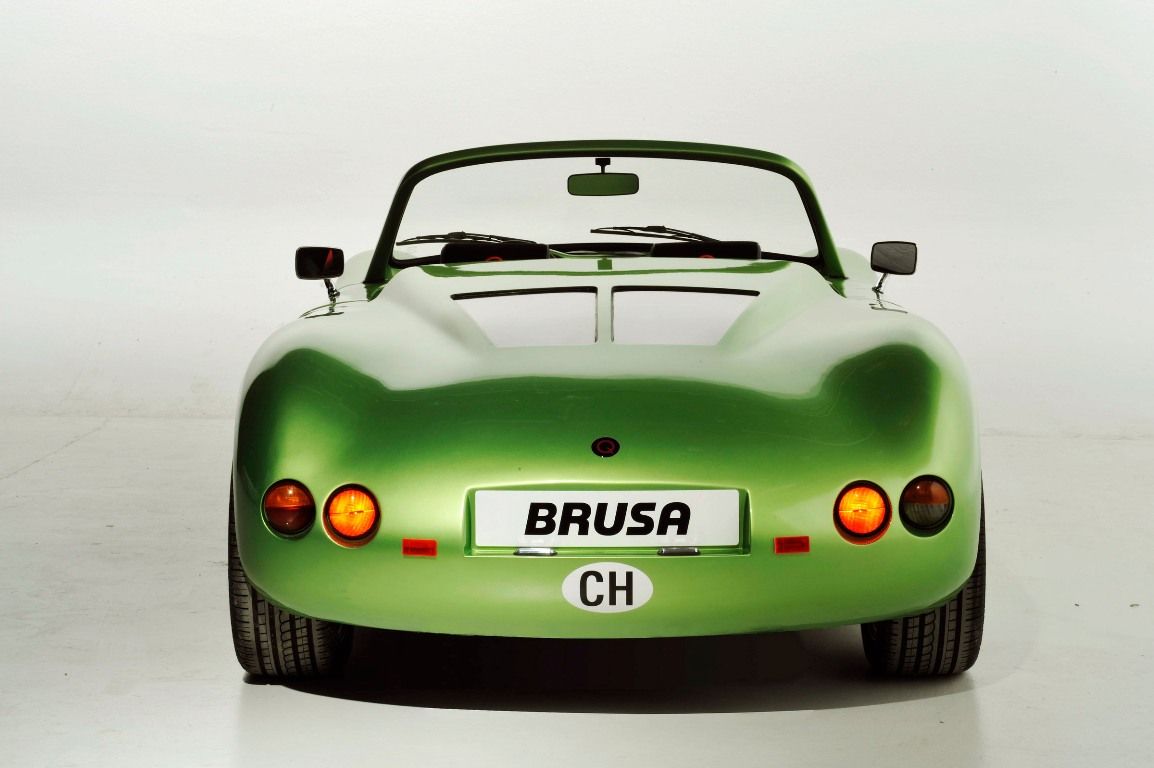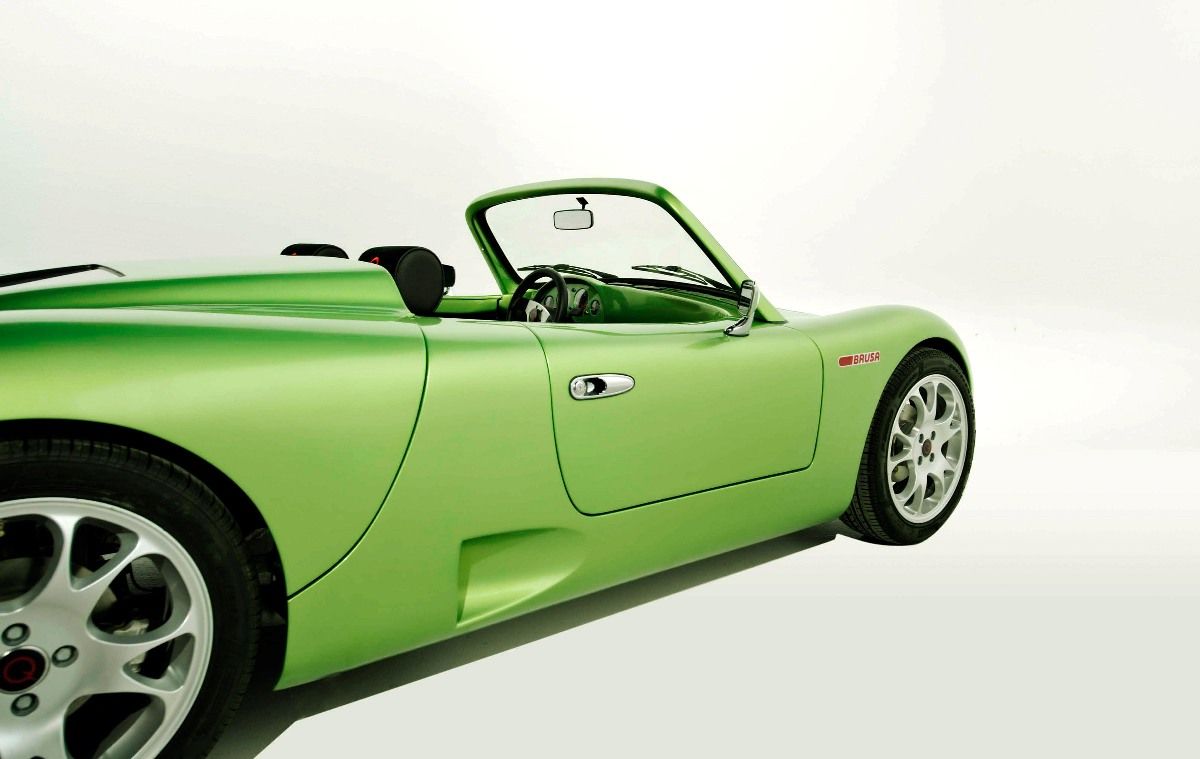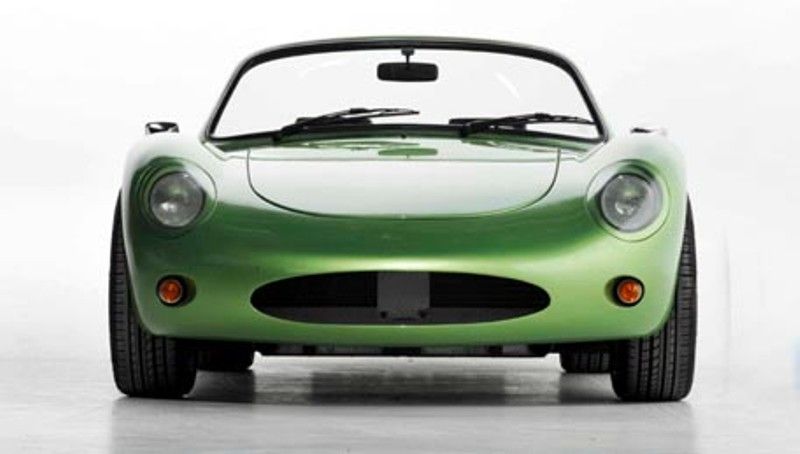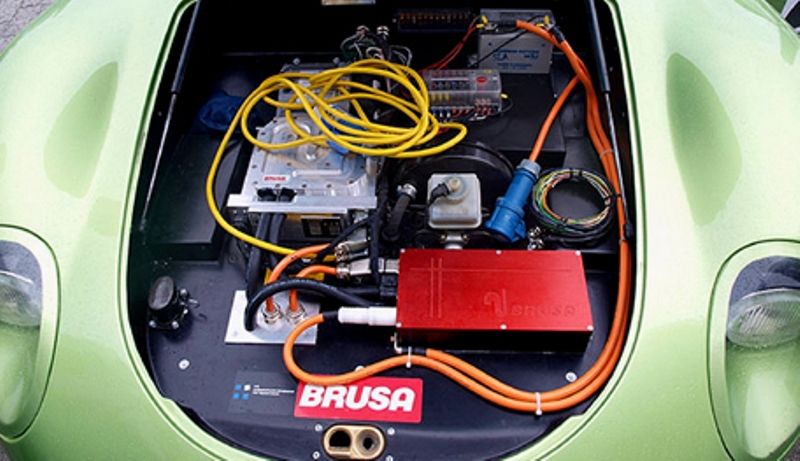Electric vehicles are slowing showing that they can be a serious threat to the conventionally powered cars, as they are getting closer to the same performance levels offered by their rivals. Not long ago “electric car” was synonymous with “unexciting car,” but things are starting to change. We know that the electric motors still have a long way to go before they will be as popular as the combustion engines, but a journey of a thousand miles begins with a single step. Tesla and Fisker have already taken that step, now it's time for Brusa to take that first step as well.
You may know a thing or two about the electric sports cars developed by the first two manufacturers, we doubt that you’ve heard many people talk about Brusa’s Spyder. And that is a pity, as it has all it needs to compete with success against any Fisker or Tesla.
Launched in 2009, the Brusa Spyder, uses the Rudolph Spyder’s body -- a little-known German roadster inspired by the legendary Porsche 550 Spyder. Under its curvy skin you’ll find a pair of 95 kW (127-horsepower) Hybrid-Synchron electric motors which offer a total output of 254 horsepower and 2,200 Nm (1,622 pound-feet) of torque to the rear wheels.
Hit the jump for more information on the Brusa Spyder.
2010 Brusa Spyder
- Make: Array
- Model: 2010 Brusa Spyder
- Horsepower: 268
- Torque: 1623
- [do not use] Vehicle Model: Array
Exterior and Interior
Porsche is always appreciated for its classy design language and the style of its cars is like wine – the older the car the better it gets. Needless to say, Brusa made a wise choice to fit its electric powertrain under the body of the Rudolph Spyder, which obviously draws inspiration from the Porsche 550 Spyder’s style.
The Brusa Spyder’s body features a series of curvy lines that gel together, forming a classy skin that will attract the attention of many. The front end is characterized by a pair of round headlights mounted in forward of the muscular wheel arches. The bumper is seamlessly integrated into the body and is fitted with an oval air intake flanked by a set of round turning signals.
The fluid lines found up front are carried over toward the back of the car, where you find a pair of twin taillights that create a distinctive nighttime signature.
Once you jump inside, you are welcomed by an old school interior. There is a classy dash painted in the same color as the body to give this roadster a clean flow from the body to the cockpit. A clean instrument panel and a pair of well cushioned sports seats help round out the interior.
The entire cockpit draws inspiration from the race cars and we especially like the tasty steering wheel, which adds the finishing touch to the sporty style. With its racecar inspiration, it's safe to say that you won’t find many modern amenities inside the Brusa's cabin.
Engines and Performance
The rear wheels are powered individually by a pair of Hybrid-Synchron electric motors which combine to offer a total output of 200 kW (268 horsepower) and 2,200 Nm (1,622 pound-feet) of torque. The great thing about electric motors is that there is an extremely steep torque curve, which delivers the peak torque nearly instantaneously.
Each motor uses its own controller and drives one of the two rear wheels. This technology provides the Brusa Spyder with the ability to vary the amount of power sent to each wheel, which is known as torque vectoring. Thereby, the electric roadster doesn’t need the services of a differential, which helps it save some weight. In this way, the electric motor needs to deal with a total weight of only 2200 pounds (1000 kg).
As a result of its massive torque and respectable horsepower, the Brusa can accelerate from 100 km/h (62 mph) in less than five seconds, while the top speed is rated at over 200 km/h (124 mph).
The electric motors are powered by a Kokam lithium-polymer battery pack. According to the company, the batteries store enough juice to keep the car on road up to 125 km (77 miles) at an average speed of 80 km/h (48 mph). If you want to drive with a speed of 160 km/h (100 mph), the range is reduced to 50 km (31 miles). As expected, driving at 200 km/h (124 mph) will drop the range to a around-the-corner-like 30 km (18 miles). This certainly sounds very disappointing for any crazed driver, but at least the batteries can be fully charged in just about about four hours, using a 16-amp, 220-volt outlet.
Brusa Spyder Specifications
|
Motor |
Hybrid-Synchron electric |
|
Total Power Output |
268 hp |
|
Maximum Torque |
2.200 Nm |
|
0-100 kmph |
4.9 seconds |
|
Top Speed |
200 kmph |
Conclusion
Unfortunately, Brusa is just a Swiss electronics company and it’s not a true car manufacturer. The Spyder is only a concept presented at the EVS 24 conference in Stavanger, Norway to showcase various electric components, so it’s not for sale. We also need to mention that the car was designed for speed only -- safety wasn’t taken into consideration.
Despite its bleak production outlook and lack of basic safety provisions, the Brusa Spyder is a very interesting electric car and has all it needs to give you the same thrills as any conventionally powered sports car. Its main disadvantage however, is the limited range.

